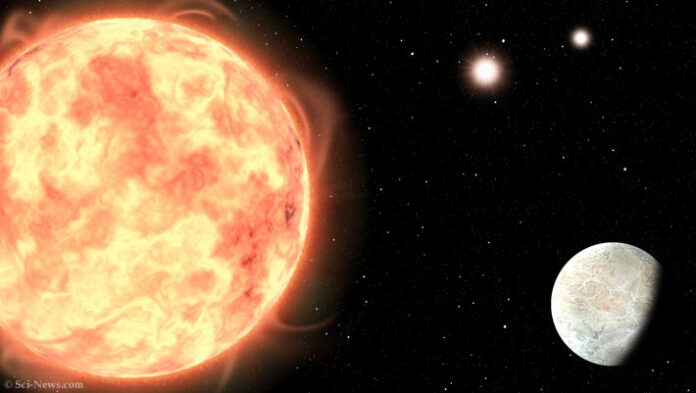Based on the book trilogy Remembrance of Earth’s Past by Chinese computer engineer Cixin Liu, Netflix’s sci-fi television series 3 Body Problem introduces viewers to advanced concepts in physics in service to a suspenseful story involving investigative police work, international intrigue, and the looming threat of an extraterrestrial invasion. Yet how closely does the story of 3 Body Problem adhere to the science that it’s based on? The very name of the show comes from the three-body problem, a mathematical problem in physics long considered to be unsolvable.
“The three-body problem is a very famous problem in classical and celestial mechanics which goes back to Isaac Newton,” said Dr. Djordje Minic, a physicist at Virginia Tech.
“It involves three celestial bodies interacting via the gravitational force — that is, Newton’s law of gravity.”
“Unlike mathematical predictions of the motions of two-body systems, such as Earth-Moon or Earth-Sun, the three-body problem does not have an analytic solution.”
“At the end of the 19th century, the great French mathematician Henri Poincaré’s work on the three-body problem gave birth to what is known as chaos theory and the concept of the butterfly effect.”
Both the novels and the Netflix show contain a visualization of the three-body problem in action: a solar system made up of three stars in erratic orbit around one another.
“There are no known configurations of three massive stars that could maintain an erratic orbit,” said Dr. Shane Ross, an aerospace engineer and mathematics expert at Virginia Tech.
“There was a big breakthrough about 20 years ago when a figure eight solution of the three-body problem was discovered, in which three equal-sized stars chase each other around on a figure eight-shaped course.”
“In fact, Cixin Liu makes reference to this in his books.”
“Building on that development, other mathematicians found other solutions, but in each case the movement is not chaotic.”
“It’s even more unlikely that a fourth body, a planet, would be in orbit around this system of three stars, however erratically — it would either collide with one or be ejected from the system.”
“The situation in the book would therefore be a solution of the ‘four-body problem,’ which I guess didn’t have quite the right ring to use as a title.”
“Furthermore, a stable climate is unlikely even on an Earth-like planet.”
“At last count, there are at least a hundred independent factors that are required to create an Earth-like planet that supports life as we know it.”
“We have been fortunate to have had about 10,000 years of the most stable climate in Earth’s history, which makes us think climate stability is the norm, when in fact, it’s the exception.”
“It’s likely no coincidence that this has corresponded with the rise of advanced human civilization.”


